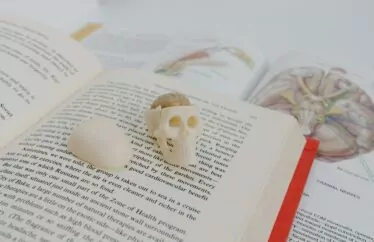So aside from being the Editor-In-Chief of Every College Girl, unbeknownst to some I also moonlight as a college yogi. Throughout my three and a half years of college thus far I have found meditation to be an integral part of staying healthy, connecting my mind, body, and spirit, and keeping stress levels at bay. After taking a Buddhist Ethics and a Buddhist Meditation class where I had the privilege of studying multiple forms of meditation and attending several retreats, the following is my own meditation practice, revealed step by step. In sharing this it is my hope that in times of stress, or just in time you make for yourself each day, you might try a meditation of your own and that this guide can help you on your own spiritual journey!
- Get comfortable. I try as much as possible to make sure my back is straight. Depending on if I’m doing it in the morning or at night, if I’m not sitting up I’ll likely doze off. (It’s happened before, but I didn’t judge myself. I just gave myself the nap I truly needed) Also make sure your back is supported, it will allow you to sit for longer.
- Set a timer on your phone. Time is often a huge distraction for me, between wondering how much time has passed, how much longer I have to go, and what I should do with the remainder of my day. To mute these voices in my head I have found it imperative to set a timer on my phone. A regular timer works fine, but I also like to use the Meditation timer on my Headspace app!
- Close your eyes, and breathe into your lower abdomen. These are called vase breaths, and they work by breathing into your lower abdomen instead of through your chest. To make sure you’re doing it right make sure your posture is in check, and place a hand on your stomach to make sure you can feel it rising and falling. Don’t strain and hold the breath for too long, let it come naturally.
- Breath counting/mantra chanting. This is where your thoughts and distractions come in and try to take over. I find that starting a practice by counting breaths works similarly to a mantra (and if mantras feel better than I go with that instead, I like to switch it up depending on how grounded I feel. If I do stick with a mantra, my favorite it Aham Prema, “I am divine love”). If I count instead, I count “1” with my first inhale, “2” with my first exhale, “3” with the next inhale, and so on and so forth. When I noticed that I have diverged from counting and become taken away by thoughts, I start at 1 again. I try to make sure I can count up to at least 30 without interruption before I proceed, but again every day is different. Sometimes it takes 50, sometimes 100, sometimes 10.
- Watch thoughts come and go. Notice how I didn’t say “try to make my thoughts disappear,” there is no effort here. Simply observe your own thoughts as if they were cars going by – they’re not you. Label them as a thought, observe what patterns may arise and fall or what may be at the forefront of your mind, and let them dissipate naturally like clouds in the sky. This part can take awhile, be patient!
- Connect with the body. This is the part in my meditation where I check in with my body. I see where I’m holding any tension, or any places that feel uncomfortable. Usually a quick scan is all it takes, I do this regularly enough where nothing seems to build for long. If I do notice some tension (usually in my shoulders) I imagine releasing it with each breath.
- Open the third eye. This is the fun part! After I feel more settled (and again, it’s O.K. here if thoughts are still bouncing around, just make sure you don’t mistake them for yourself!) I focus all of my energy on the space between my eyebrows. With my eyes closed as pretend as if I am looking right at it, and I ask it to open. Sometimes it feels like a cracking sensation, sometimes a dull ache, it really depends on the day.
- Receive. This is usually the part where I receive information, images, and whatever comes. Sometimes nothing comes, and that’s fine. Sometimes things come sporadically, and I have to return to the mantra or counting breaths inbetween, and that’s great too. Go with the flow! This is the part of the practice where if you are most receptive, amazing things will come to you. Try to keep your focus on your third eye (or whatever other chakra suits you for your purposes) for the remainder of the practice, returning to the breath or your mantra when necessary.
- Take time coming out, take 10 more breaths and stretch. Don’t forget to thank yourself!
You can do this practice anywhere from about 10 minutes to an hour, and I urge you to take this time for yourself to spend time with your inner self! Always remember to end your practice by saying “namaste,” which means the light within me respects the light within you.
What do you think?
Have you tried meditation? Have you tried this meditation? How has meditation helped you to connect with yourself? What other mindfulness methods do you use? Are you a college yogi? Share with us by leaving us a comment below!

















